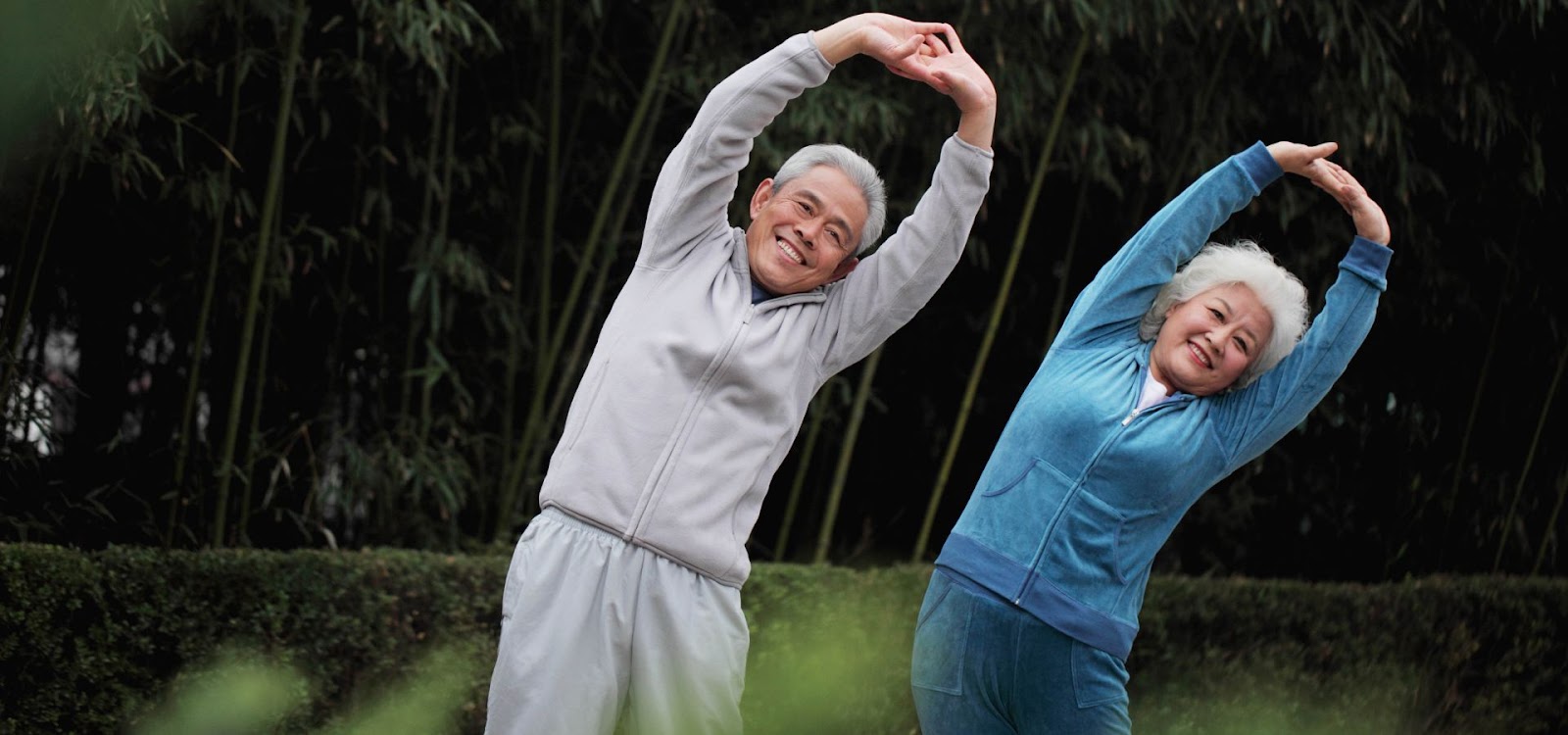Maintaining a youthful, vibrant body and mind goes beyond skin care and diet. Engaging in regular exercise that supports strength, flexibility, and balance can help slow down the aging process, improve energy, and boost overall well-being. Here are some highly effective anti-aging exercises you can incorporate into your routine to keep your body feeling young and active.

1. Strength Training
Strength training, or resistance exercises, helps build and maintain muscle mass, which naturally declines with age. It also supports bone density, reducing the risk of osteoporosis and joint issues. You don’t need heavy weights—light dumbbells, resistance bands, or even body weight exercises (like squats, lunges, and push-ups) can make a big impact.
Try This: Aim for 2-3 strength-training sessions per week, focusing on different muscle groups each time. Doing 2-3 sets of 10-12 reps for each exercise is a good start.
2. Yoga and Pilates
Yoga and Pilates both promote flexibility, core strength, and stability, all essential components of healthy aging. These practices improve posture, which can help prevent age-related back and neck pain. They also reduce stress and boost mental clarity, promoting emotional well-being.
Try This: Start with beginner yoga poses like downward dog, cat-cow, and child’s pose or take a Pilates class focusing on core strength. Practicing 15-30 minutes daily can make a significant difference.

3. High-Intensity Interval Training (HIIT)
HIIT involves short bursts of intense activity followed by brief rest periods. This type of exercise boosts cardiovascular health, improves endurance, and accelerates fat burning, all of which contribute to maintaining a healthy weight and youthful energy levels. HIIT is also time-efficient, making it perfect for busy schedules.
Try This: A typical HIIT workout could be 30 seconds of high-intensity exercises (like jumping jacks or sprinting) followed by 30 seconds of rest. Repeat for 10-20 minutes, 2-3 times per week.
4. Walking or Hiking
Walking is an excellent low-impact exercise that benefits the heart, lungs, and joints. Daily walks improve blood circulation, help manage weight, and reduce the risk of age-related conditions like high blood pressure and diabetes. For an extra challenge and added benefit, try hiking to engage your muscles more and enjoy the added bonus of nature’s stress-relieving qualities.
Try This: Aim for at least 30 minutes of brisk walking or 1-2 hours of moderate hiking a few times a week.

5. Stretching
Stretching keeps muscles and joints flexible, reducing stiffness and improving your range of motion. Regular stretching can alleviate joint pain, improve posture, and help prevent injuries, keeping you agile as you age.
Try This: Incorporate a 5-10 minute stretching routine every day, focusing on the major muscle groups (hamstrings, quads, calves, shoulders, and back).
6. Balance Exercises
Balance exercises reduce the risk of falls, a common concern as we age. Balance also plays a role in overall coordination, posture, and core strength. Incorporating balance moves into your routine will help you stay steady and build lower-body strength.
Try This: Practice standing on one leg for 10-15 seconds, then switch. Gradually increase your balance by closing your eyes or using a stability ball. Yoga poses like the tree pose are also great for balance.

7. Swimming and Aqua Aerobics
Swimming is a low-impact, full-body workout that enhances cardiovascular health, flexibility, and muscle tone without putting stress on joints. Aqua aerobics, in particular, is a great way to add resistance to your workout and improve muscle tone without strain.
Try This: Aim for a 30-60 minute swim or aqua aerobics class 1-2 times a week to get a comprehensive workout without stressing your joints.
Exercise not only enhances physical appearance but also supports mental clarity, energy levels, and resilience, all crucial components of graceful aging. By incorporating these exercises into your routine, you’ll be setting yourself up for a healthier, more vibrant future.
FAQs
How often should I do these anti-aging exercises?
Incorporating a mix of strength, flexibility, and cardiovascular exercises 4-5 days a week is ideal for maximum benefits. You don’t have to exercise for hours; even short 20-30 minute sessions can be highly effective.
Is yoga as effective as strength training for anti-aging?
Both yoga and strength training have unique anti-aging benefits. While yoga enhances flexibility, balance, and mental clarity, strength training is essential for muscle preservation and bone health. Combining the two offers the best overall benefits for aging gracefully.
Are high-intensity exercises safe for older adults?
When done carefully and with proper form, high-intensity exercises are safe and beneficial for most adults. However, beginners should start slowly and may consider consulting with a fitness professional before starting HIIT workouts to ensure safety.
Can stretching really make a difference in aging?
Yes, stretching helps maintain flexibility and range of motion, which are often reduced with age. Regular stretching improves joint health, reduces stiffness, and lowers the risk of injuries, making daily movement more comfortable as you age.

